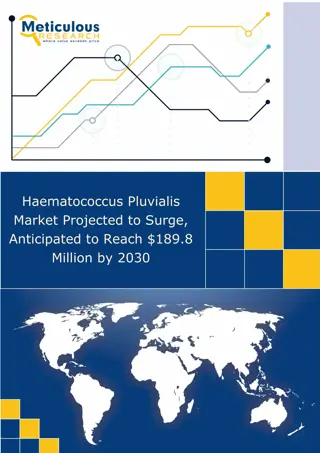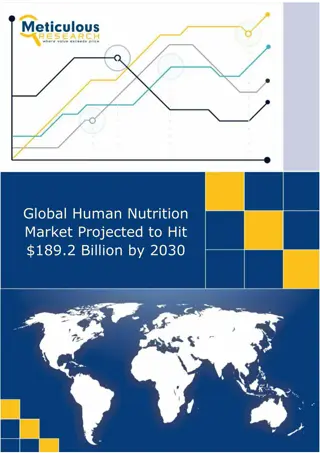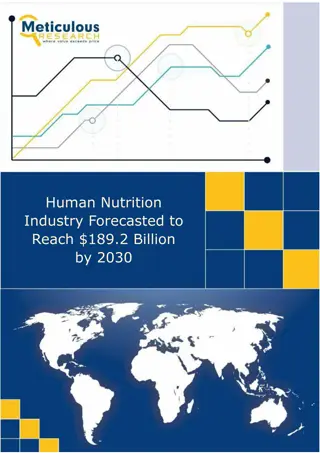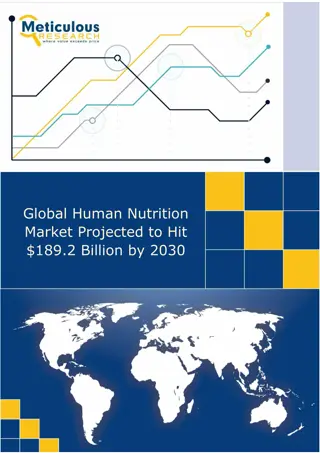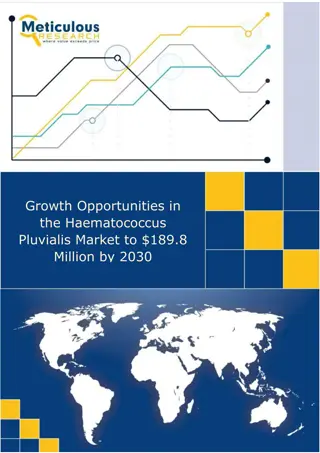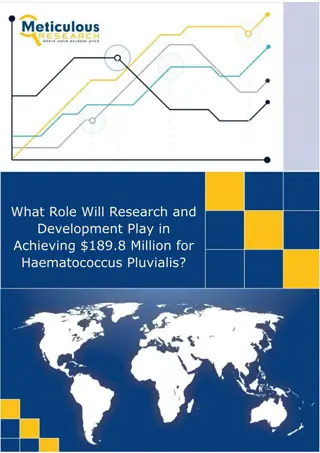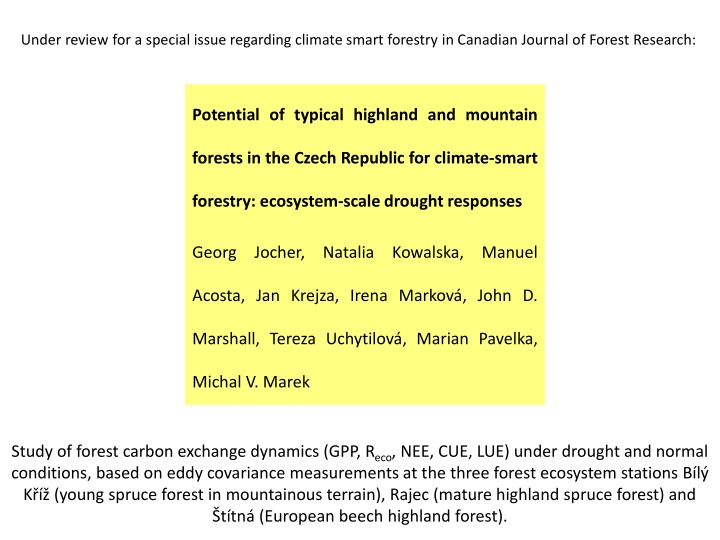
Exploring Potential of Czech Republic Mountain Forests for Climate-Smart Forestry
"Discover the ecosystem-scale drought responses of highland and mountain forests in the Czech Republic through a study on forest carbon exchange dynamics under drought and normal conditions. Learn about the actions and strategies involved in climate-smart forestry to mitigate climate change and enhance forest resilience and productivity."
Download Presentation

Please find below an Image/Link to download the presentation.
The content on the website is provided AS IS for your information and personal use only. It may not be sold, licensed, or shared on other websites without obtaining consent from the author. If you encounter any issues during the download, it is possible that the publisher has removed the file from their server.
You are allowed to download the files provided on this website for personal or commercial use, subject to the condition that they are used lawfully. All files are the property of their respective owners.
The content on the website is provided AS IS for your information and personal use only. It may not be sold, licensed, or shared on other websites without obtaining consent from the author.
E N D
Presentation Transcript
Under review for a special issue regarding climate smart forestry in Canadian Journal of Forest Research: Potential of typical highland and mountain forests in the Czech Republic for climate-smart forestry: ecosystem-scale drought responses Georg Jocher, Natalia Kowalska, Manuel Acosta, Jan Krejza, Irena Markov , John D. Marshall, Tereza Uchytilov , Marian Pavelka, Michal V. Marek Study of forest carbon exchange dynamics (GPP, Reco, NEE, CUE, LUE) under drought and normal conditions, based on eddy covariance measurements at the three forest ecosystem stations B l K (young spruce forest in mountainous terrain), Rajec (mature highland spruce forest) and t tn (European beech highland forest).
Base of climate smart forestry (Nabuurs et al., 2018): reducing and/or extracting greenhouse gas emissions to mitigate global climate change adapting forest management to build resilient forests implementing active and smart forest management directed to sustainably increasing productivity Actions in the course of climate smart forestry: protecting and enhancing the regeneration of full-grown coppice avoiding deforestation and forest soil disturbance increasing the area covered by forests (afforesting abandoned agricultural land) increasing the use of wood in construction and long-living wood products enhancing growth and regeneration of adult forest stands, including their protection against drought, wind, and bark beetle impacts by the application of special and smart silvicultural systems (e.g., thinning, selective cutting)
Map of Europe (left) and Czech Republic (right), depicting the three study sites Bl K, Rajec and t tn . The range of elevations in the country (115 m a.s.l. - 1603 m a.s.l.) is colour indicated with varying grey tones.
Characteristic B l K Rajec t tna Moravian Silesian Beskydy Location Drahansk Highlands White Carpathian Mountains Mountains 49 30 07.550 N 49 26 37.405 N 49 02 09.510 N Latitude Longitude 18 32 12.741 E 875 16 41 47.445 E 625 17 58 11.640 E 540 Elevation (m a.s.l.) Topography Mountain ridge (13 slope Hilly (5 slope with NE-E Hilly (10 slope with W-SW exposure) with S-SW exposure) exposure) Ecosystem type Coniferous evergreen forest Coniferous evergreen forest Deciduous broadleaf forest Main species Norway Spruce (Picea abies Norway Spruce (Picea abies European Beech (Fagus (L.) H. Karst.) (L.) H. Karst.) sylvatica L.) Vegetation height (m) 17 (mean, 2018) 34 (mean, 2018) 31 (mean, 2018) Stand age (years) 37 (2018) 115 (2018) 117 (2018) Basal area (m2 ha-1) 38 (2018) 53 (2018) 34 (2018) Total biomass (t ha-1) 158 (2018) 500 (2018) 389 (2018) Long term (1990 2019) mean daily 5.4 6.9 7.1 temperature ( C) Mean annual temperature ( C) 6.5, 6.5, 7.5 (2016 2018) 7.7, 7.8, 8.9 (2016 2018) 8.8, 8.9, 10 (2016 2018) Long term (1990 2019) mean annual 1227 705 864 precipitation (mm) Annual 1268, 1155, 893 (2016 2018) 603, 682, 474 (2016 2018) 670, 629, 466 (2016 2018) precipitation (mm) Percentage of normal precipitation (%) 103, 94, 73 (2016-2018) 86, 97, 67 (2016-2018) 78, 73, 54 (2016-2018) Soil type Haplic and Entic Podzol Modal Cambisol Eutric Cambisol mesotrophic oligotrophic Soil depth (cm) 72 (2016) 60 (2016) 63 (2016) Water holding capacity (%) 31 (2016) 23 (2016) 30 (2016) Wilting point (%) 13 (2016) 11 (2016) 11.5 (2016) References Acosta et al. (2018) McGloin et al. (2018) McGloin et al. (2018)
Annual gross primary production (GPP), ecosystem respiration (Reco) and net ecosystem exchange (NEE) at the three study sites for the three years 2016 (reference) 2018 (drought year): The highest impact of drought, i.e. reduction in GPP and consequently NEE, is to observe at the mature spruce forest in Rajec. At B l K , the site specific microclimate dampens drought effects. The European beech forest in t tn appears to be most resilient to drought effects.
Time series of daily sums of net ecosystem exchange (NEE; g (C) m-2 day-1), gross primary production (GPP; g (C) m-2 day-1) and ecosystem respiration (Reco; g (C) m-2 day-1) over the whole study period. The lines indicate local polynomial regression fittings (loess; span = 0.1). Drop in GPP and consequently NEE in the drought year 2018 is most prominent at the mature spruce forest in Rajec. At B l K , the site specific microclimate dampens drought effects. The European beech forest in t tn appears to be most resilient to drought effects.
Monthly carbon use efficiency (CUE; NEE/GPP) in 2018 (drought year) in relation to monthly CUE in 2016 (reference year) for the three study sites B l K (BK; black circles), t tna (ST; blue triangles), and Rajec (RA; green diamonds). Black line depicts the 1:1 line. Drop in CUE in 2018 in comparison to 2016 most pronounced at the mature spruce forest in Rajec.
Monthly light use efficiency (LUE; GPP/PAR) in 2018 (drought year) in relation to monthly LUE in 2016 (reference year) for the three study sites B l K (BK; black circles), t tna (ST; blue triangles), and Rajec (RA; green diamonds). Black line depicts the 1:1 line. Drop in LUE in 2018 in comparison to 2016 most pronounced at the mature spruce forest in Rajec. Range of LUE values smallest at the mature spruce forest in Rajec.
Cumulative differences between precipitation in 2018 and the reference year 2016 in the course of the year for the three study sites B l K (BK; black), t tna (ST; blue), and Rajec (RA; green). The red horizontal line depicts the zero line. The difference in cumulative precipitation between 2018 and 2016 is most pronounced at B l K . However, the higher baseline precipitation there yields that the resulting water supply in 2018 is still sufficiently high to prevent drought impacts.
Spruce stand vs. beech stand: responses to drought Spruce trees have a shallow root system (e.g. Kalliokoski 2011), hence, they are not able to acquire sufficient water when drought periods cause the surface soil to dry. The ecosystem at RA suffers from many years of bark beetle infestation. Intensified bark beetle infestations may further weaken the spruce ecosystem s general resilience to drought periods. A third consideration is the height of the trees at RA, which may lead to hydraulic limitations (e.g. Koch et al. 2004) that are worsened by the drought. although beech trees also have a relatively shallow root system, they are able to develop deep sinkers (e.g., Harley 1940; Thomas 2000), roots that vertically emerge from the lateral root system to access deep water. beech trees can adapt the size and productivity of their fine root system according to the available water supply (Hertel et al. 2013), and hence they can mitigate the harmful effects of water scarcity. Third, the soil is deeper and the water-holding capacity is higher at ST than at RA (Table 1), which would increase the water available during the early part of the drought. B l K ecosystem can be treated as exception here due to its specific microclimate. The ecosystem did not suffer under water scarcity in the pan-European drought year 2018.
Excerpts from the drawn conclusions of this study: During drought, the mature spruce ecosystem s NEE is reduced by around 50% as the carbon and light use efficiencies decline. In contrast the young spruce, on a cooler moister site, does better. These results have major implications for climate-smart forestry: they suggest that spruce monocultures on dry sites should be replaced with tree species that are more resilient to drought. Mixed spruce and beech stands, e.g., are considered to be a more drought resilient silvicultural option than monocultures (Goisser et al. 2016) Due to ongoing climate change, droughts can be expected to occur more frequently in future and to be more severe. Climate-smart forestry must consider this in choosing forest tree species, an action that can contribute to climate change mitigation.
Shown literature Nabuurs, G. J., Verkerk, P. J., Schelhaas, M., Gonz lez-Olabarria, J. R., Trasobares, A., and Cienciala, E. 2018. Climate-smart forestry: mitigation impact in three European regions. From Science to Policy 6. European Forest Institute, Joensuu, Finland. Kalliokoski, T. 2011. Root system traits of Norway spruce, Scots pine, and silver birch in mixed boreal forests: an analysis of root architecture, morphology, and anatomy. Finnish Society of Forest Science. Koch, G. W., Sillett, S. C., Jennings, G. M., Davis, S. D. 2004. The limits to tree height. Nature 428(6985): 851 854. Harley, J.L. 1940. A study of the root system of the beech in woodland soils, with especial reference to mycorrhizal infection. J. Ecol. 28: 107 117. doi: 10.2307/2256165. Thomas, P. 2000. Trees: their natural history. Cambridge University Press Cambridge, UK. doi:10.1017/CBO9780511790522. Hertel, D., Strecker, T., M ller Haubold, H., and Leuschner, C. 2013. Fine root biomass and dynamics in beech forests across a precipitation gradient is optimal resource partitioning theory applicable to water limited mature trees? J. Ecol. 101: 1183 1200. doi: 10.1111/1365-2745.12124. Goisser, M., Geppert, U., R tzer, T., Paya, A., Huber, A., Kerner, R., Bauerle, T., Pretzsch, H., Pritsch, K., H berle, K.H., Matyssek, R., Grams, T. 2016. Does belowground interaction with Fagus sylvatica increase drought susceptibility of photosynthesis and stem growth in Picea abies? Forest Ecology and Management 375, 268-278.




